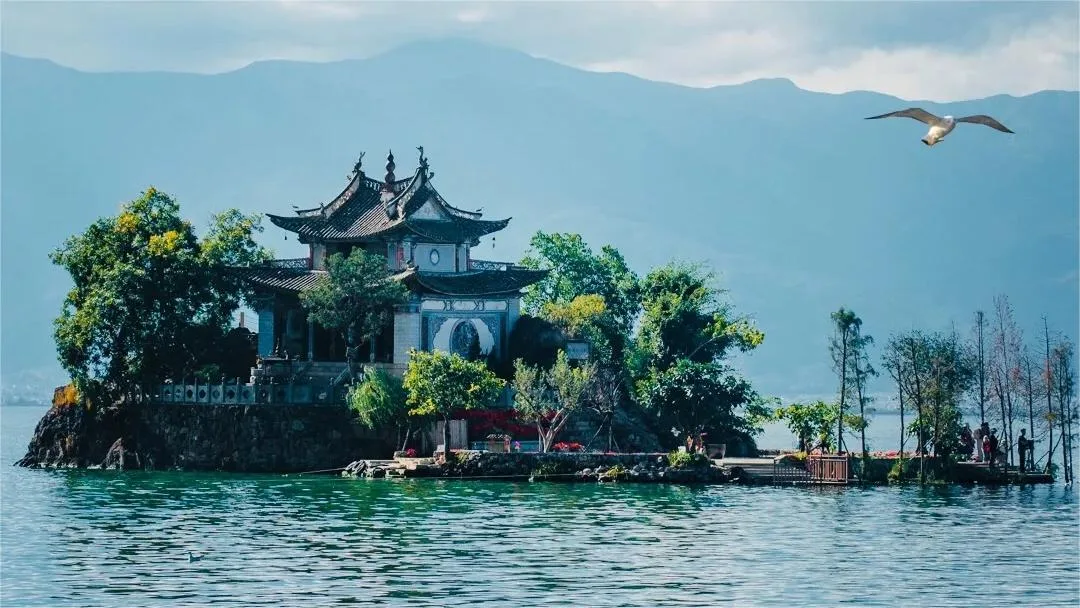Wase Town (挖色镇, Digging Color Town), formerly known as Haibianyi, was renamed Wase after colored minerals were excavated from the nearby mountains, coloring the town’s history. Its origins can be traced back to the Yuan Dynasty when it was established as Mengzhou (referred to as Mengzheng in the local dialect). Nestled amidst the breathtaking backdrop of Cangshan Mountain and Erhai Lake, Wase Town boasts stunning scenery and a plethora of distinctive inns known for their complete facilities and unique charm. In comparison to the more renowned Shuanglang, Wase Town maintains a serene ambiance, offering relatively affordable accommodation and dining options.
Within the boundaries of Wase Town lies a treasure trove of ancient Bai ethnic architecture. The gateways, mostly erected during the late Qing Dynasty and early Republic of China era, were crafted by artisans from Wase and neighboring Shuanglang, showcasing the typical architectural features of the eastern shores of Erhai Lake. While Dali is characterized by stone wall constructions, Wase Town’s architecture relies on stone foundations, locally known as “stone feet,” meticulously assembled with five-sided stones and wooden planks for wall construction, layered with bricks, soil, and tile roofs. Decorations predominantly feature paintings and sculptures, with temples adorned with depictions of dragons, phoenixes, lions, and tigers, while residents often paint motifs like pumpkin flowers.
Excavations in Wase Town have unearthed a plethora of artifacts, including stone axes, chisels, pears, and fishing net weights from the Neolithic period, followed by discoveries from the Bronze Age. These Neolithic, Bronze Age, and pottery artifacts exhibit striking similarities to the tools still in use by the modern-day Bai ethnic population, reflecting a continuous lineage of indigenous cultural heritage. During the reign of Emperor Xiaodi of the Zhou Dynasty in the 11th century BCE, the ancestors of Wase established the Lu Bai Kingdom centered around the area of Desert Temple, laying the foundation for the early Lu Bai culture of the Bai ethnic group.
Wase Town is home to numerous historical and cultural sites, including Desert Temple (沙漠庙), the principal deity temple on the eastern shores of Erhai Lake; Chongfu Temple (崇福寺), the founding temple of the famous Jizu Mountain; the ancestral temple of the ministers appointed by the Nanzhao Kingdom’s King Jiaping (now Lingji Temple); Confucian and Martial Temples from the Qing Dynasty; Small Putuo Temple; and various plaques commemorating the achievements of local officials and literati such as “Dafu Mansion (大夫第),” “Jinshi Mansion (进士第),” and “General Mansion (将军第).”
Basic Information
| Estimated Length of Tour | 1 day |
| Ticket Price | Free |
| Opening Hours | 24 hours a day throughout the year |
| Telephone Number | 0086-0872-2468001 |
Location and Transportation
Wase Town is situated in the central-eastern part of Dali City, Yunnan Province, right next to Little Putuo Island. It shares its eastern border with Binchuan County, is adjacent to Haidong Town to the south, borders Erhai Lake to the west, and connects with Shuanglang Town to the north.
To reach Wase Town, you can take a bus from the bus terminal near the Dali train station. Buses run approximately every twenty minutes from 8:30 AM to 4:00 PM. Alternatively, you can also take bus route 11 from Longshan Intersection (龙山路口) to reach Wase Town.


